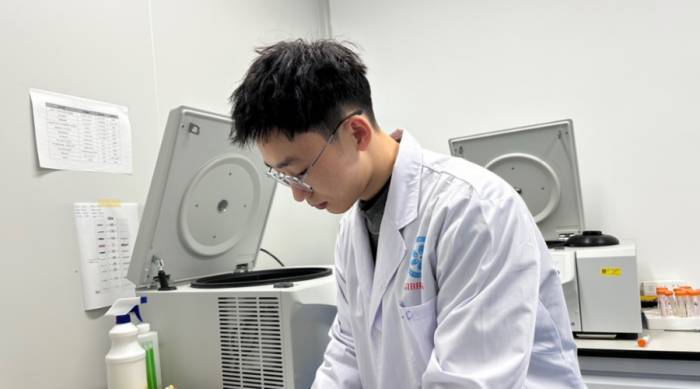Currently, the field of cell regeneration and cell transformation has attracted widespread attention. However, the mechanisms of cell fate conversion still have a certain degree of ambiguity.
Therefore, researchers continue to be committed to exploring and discovering new methods that can deepen our understanding of the cell transformation process. The latest research shows that the application of thymidine analogs can effectively promote the transformation of cell fate. However, the mechanism by which these analogs promote cell fate transformation is not yet clear.
In a recent study, Assistant Researcher Wu Haokai Feng and his team from the Guangzhou Institutes of Biomedicine and Health, Chinese Academy of Sciences, found a significant correlation between the dosage of thymidine analogs and their ability to overcome the obstacles of cellular reprogramming.
They also observed that the cell's response to DNA damage repair tends to enter an additional extra-embryonic endoderm state, providing an effective way to bypass the reprogramming obstacles.
Advertisement
In addition, they also revealed the role of the homologous recombination repair pathway in guiding the cell to undergo a comprehensive epigenetic remodeling, which can help the cell overcome greater transformation obstacles.This mechanism forms a hypomethylated environment, which in turn promotes cell fate transformation in a variety of reprogramming systems. The research team named this process "Epigenetic Reshaping through Damage (ERD)".
Overall, this study reveals how BrdU/IdU, by activating the DNA damage repair pathway, enhances histone acetylation, and promotes genome-wide DNA demethylation, thus exerting a regulatory effect on somatic cell reprogramming.
This discovery provides profound insights into the mechanisms of cell fate transformation, revealing the key role of the DNA damage repair pathway in the process of cell fate transformation, and opening up new research directions for a deeper understanding of the mechanisms of cell reprogramming.
The imagination that induced pluripotent stem cells can offer to humanity is self-evident, but their true application transformation remains an unsolved problem to this day.
With the continuous research of scientists, even though various methods of producing induced pluripotent stem cells have been established, the essence of somatic cell reprogramming cannot be reasonably explained.Currently, most reprogramming protocols are species-specific, and many species are unable to produce induced pluripotent stem cells (iPSCs).
In general, during the process of generating iPSCs, cells go through an intermediate plastic state, but this state is not conserved. For example, mice have a "primitive streak-like epiblast" state, while humans have a "reprogramming-like" state.
Therefore, instead of testing the optimal transitional states of different species, it is better to let the cells autonomously choose the most suitable plastic state for themselves.

At the same time, the research group believes that base analogs are a very powerful tool. They can directly affect the genome, thereby putting cells into a stress state. Under the pressure of survival, cells will autonomously transform into a state more suitable for the environment, increasing plasticity and promoting cell fate transformation.
This achievement also confirms this point, and proves that the reasonable use of base analogs can avoid mutations while meeting the needs. Using the means of interfering with the genome to cause epigenetic remodeling to complete reprogramming may become a favorable means to achieve iPSCs in more species. The mechanism analysis in the study also provides new understanding and potential solutions for the reprogramming process.Ultimately, the relevant paper was published in Cell & Bioscience under the title "Epigenetic Reshaping through Damage: Promoting Cell Fate Transition by BrdU and IdU Incorporation."
Li Chuang, Xu Xiaoduo, and Chen Shuya are the first authors, while researchers Pei Duanqing and Liu Jing, and assistant researcher Wu Haokai from the Guangzhou Institutes of Biomedicine and Health, serve as co-corresponding authors.
In fact, this was not initially a well-received topic, firstly because the experimental period was long, and secondly because the research subject, BrdU, was not very popular in the application field.
However, they always believed that the reasonable use of BrdU would be a very powerful tool in the field of induced pluripotent stem cells. Fortunately, the entire research process was relatively smooth, and some interesting phenomena were also discovered to support the initial idea.
Wu Haokai said, "Our team is composed of people with different academic backgrounds. I myself have a background in physics, and the first author, Li Chuang, has a background in cell biology. Therefore, our perspectives on issues are different, which allows us to discover the essence of things more objectively. This is also the key reason for the smooth progress of the topic."Overall, the aim of their series of studies is to explore the universal laws of cell fate transformation. Since they have discovered that base analogs can induce cellular stress and enter a plastic state, they will further attempt this in other species.
At the same time, the research team believes that this state is not exclusive to somatic cell reprogramming, but depends on the environment. Therefore, they will also verify it in different cell fate transformation systems, aiming to use base analogs as a tool to establish a "super plastic cell".
Comments